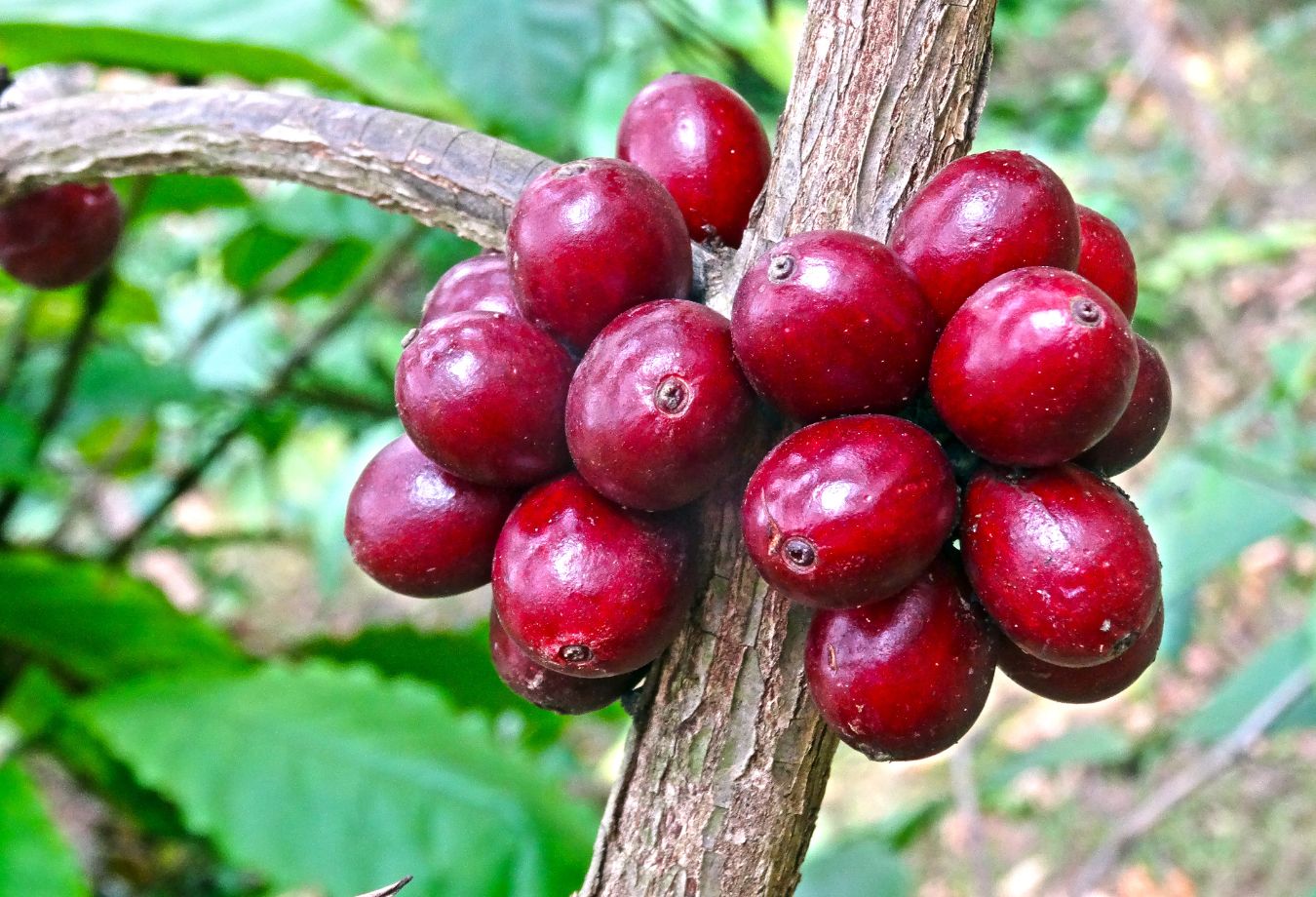
Robusta Coffee and History and Biodiversity of Robusta: Coffee is one of the world’s most important cash crops, generating substantial foreign exchange and supporting the livelihoods of millions of people globally. Over the past 30 years, the demand for coffee has grown steadily, leading to the expansion of production and exports.
Although there are 131 species in the genus Coffea known to science, two are widely and globally cultivated – Coffea arabica (trade name arabica) and Coffea canephora (trade name robusta). Throughout this post, we use the term “Robusta” to refer to the entire C. canephora species and all its subgroups.
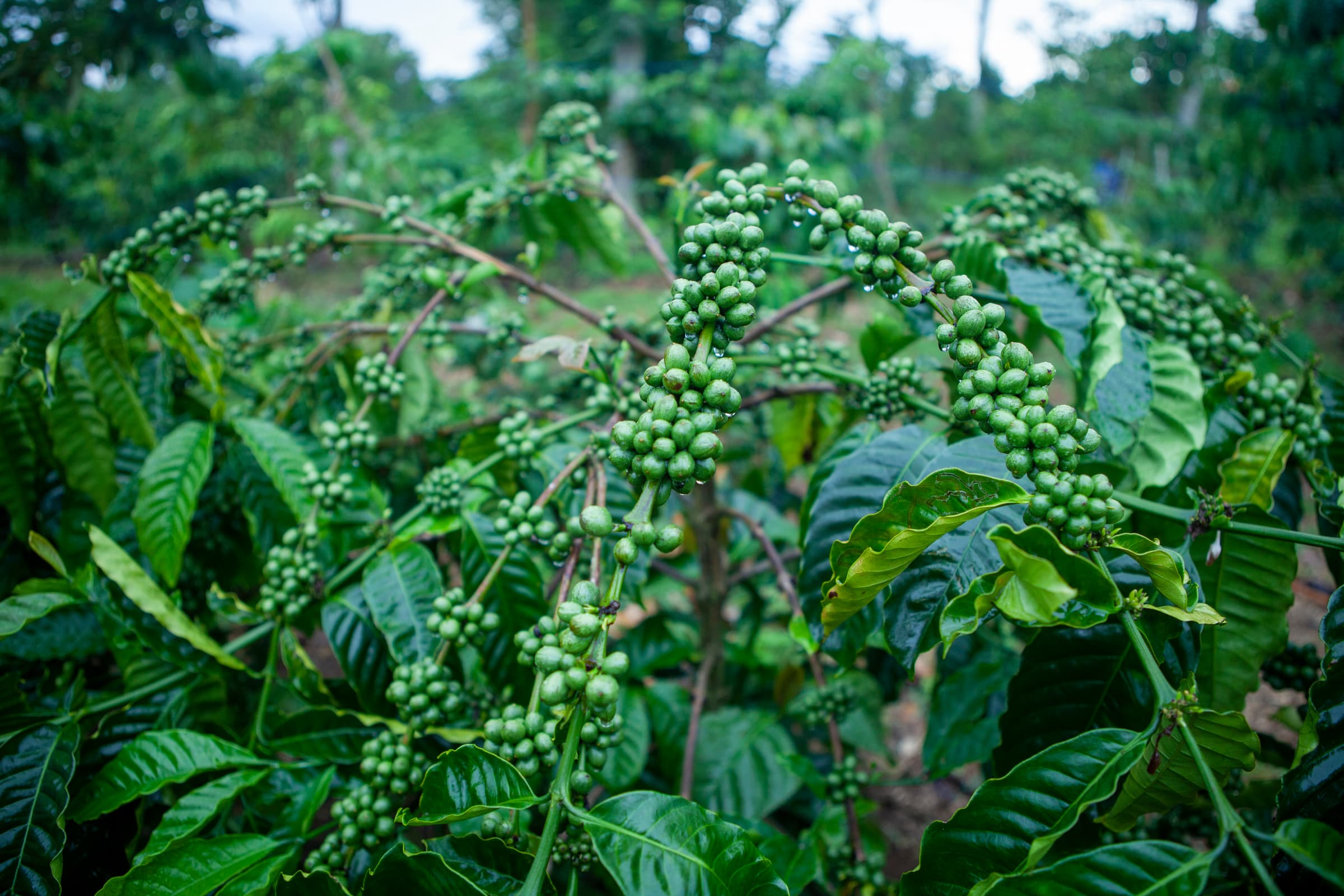
Today, Arabica has dominated most of the coffee market due to its favored flavor profile, but various factors, including the growing demand for coffee, have led to the opening of the coffee market. expand production of robusta coffee. Since this type of coffee requires less stringent growing conditions and possesses a relative degree of resistance to pests and diseases, it is likely to guarantee a good yield. Robusta coffee production also expanded rapidly after the appearance of instant coffee in the 1950s.
Currently, about 60% of the coffee produced and marketed in the world is from arabica and 40% from robusta.
ICO , 2021
The leading global robusta coffee producing countries are Vietnam, Brazil, Indonesia, Uganda and India, which together produce more than 90% of the world’s Robusta coffee. Of these, Vietnam and Uganda are the leading exporters of Robusta coffee (as Brazil retains a significant portion of its production for domestic consumption). However, an increasing number of countries that are now – or previously focused solely on Arabica coffee production – are beginning to explore Robusta coffee; Like Mexico, Nicaragua, Guatemala and Colombia, among others. In addition, more and more individuals and organizations have turned to explore the potential of Robusta coffee to improve coffee quality.
About Robusta coffee
The interest in the production of Robusta on a global level lies in the fact that it can be grown in a wider range of climates and altitudes than Arabica, which requires more demanding conditions. the correct conditions to grow, like thick shade and high altitude. In contrast to Arabica coffee, Robusta coffee plants generally have a higher yield, contain higher caffeine content , lower sugar content, higher soluble solids content and are less susceptible to pests and diseases . Furthermore, robusta coffee can be grown in warmer, wetter temperatures, is found at lower elevations between 200 and 800 meters above sea level, and generally requires less care through medication. herbicides and pesticides.
Despite these attributes, Robusta coffee is still sensitive to environmental fluctuations. Many studies show that Robusta’s ability to thrive in hotter climates can be overstated and temperatures above 20.5℃ can have a significant negative impact on yields. In addition, many Robusta coffee varieties are still susceptible to major diseases and pests, such as coffee leaf rust, stem borers, coffee anthracnose ( Coffee Berry Disease ), borers fruits, nematodes, and many other diseases…
Robusta coffee is generally easier to cultivate, gives a higher yield, and is more efficient in production than Arabica coffee. Ongoing climate projections of increased temperature and altered precipitation by 2050 by World Coffee Research suggest that Arabica cultivation may no longer be sustainable in In the coming years, this could increase the production of Robusta coffee by a considerable amount. Even so, robusta coffee faces its own climate limitations and vulnerabilities.
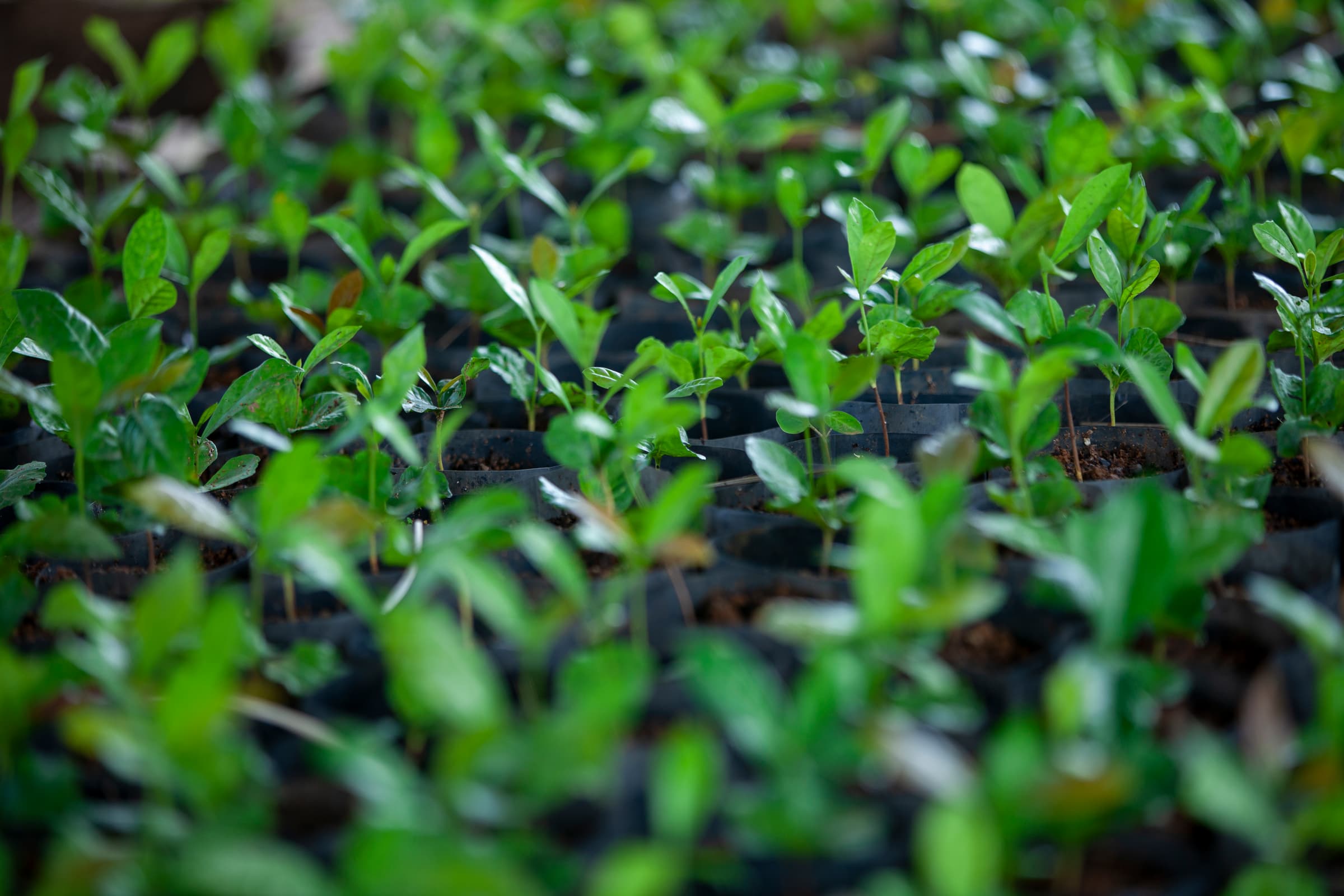
We need robusta coffee because there won’t be enough coffee for the world in the future – as simple as that.
— World Coffee Research —
However, Robusta coffee often has a big difference in taste and quality. For example, Robusta coffee often has lower acidity, higher bitterness, with a more “full body “ . Also due to its higher pyrazine content , Robusta often exhibits a characteristic earthy odor. But when handled and processed properly, Robusta can present itself as a product intended for specialty markets (Uganda Coffee Development Authority, 2019).
Biodiversity of Robusta
Various common terms are used to describe Robusta coffee where it is grown. These include “Robusta” (or “ coffee with vou ” in Vietnamese), “ conilon ”, “ nganda ”, “ koillou/quillou ” and many other terms. These terms are often regional, colloquial, and do not necessarily correspond to specific genetically distinct breeds that have been developed and marketed by breeders for many years.
Because Robusta is a cross-pollinated crop – a single Robusta plant cannot effectively pollinate its own flowers (as Arabica plants can); Scientists call this “ Allogamous ”, and so individuals grown on the same farm often cross-pollinate with each other. The consequence of this pollination system is that the majority of Robusta coffee grown will be made up of unselected populations obtained from free pollinated seeds.
Simply put, Robusta coffee plantations are genetically heterogeneous; As a result, many Robusta coffee farmers often have little awareness of the variety or subtype they are growing. This is why C. canephora is commonly known simply as “Robusta” – in commerce since about 1900.
Since Robusta coffee is cross pollinator (meaning it needs pollen from two different plants to produce new fruit), farmers need to grow more than one Robusta coffee on their farm to be effective. productivity. Several breeding programs have been developed to create “multiline varieties” for the purposeful blending of genetically distinct clones.
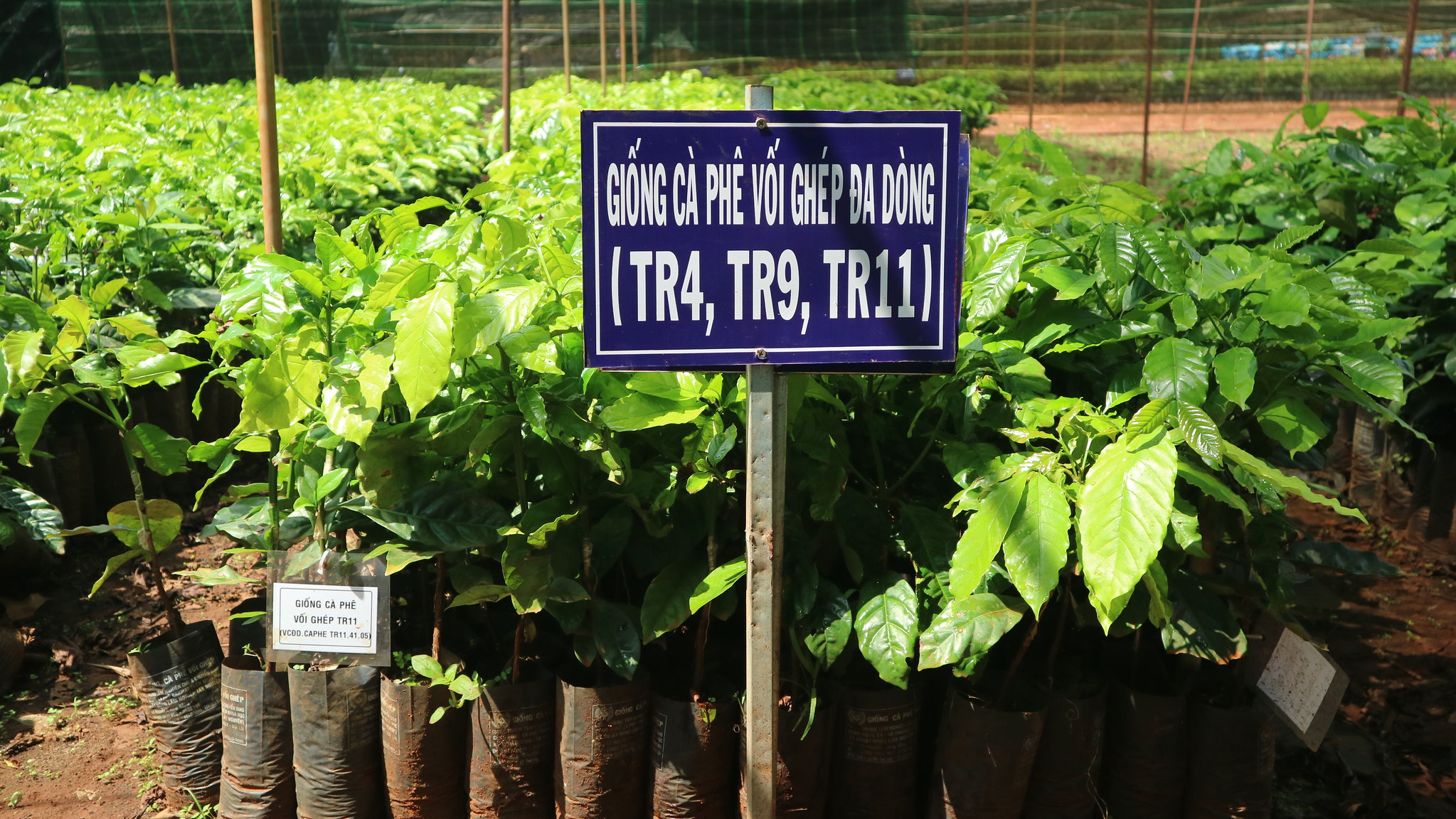
In different production regions, these seed mixes are distributed to farmers in different ways. For example, in West Africa, breeders often create polyclonal varieties (i.e., many different robusta coffees distributed together in the same seed package to farmers). In Brazil, breeders often create multiple single clones and then check the compatibility of ; The most productive clones are then propagated and offered to farmers.
However, not all Robusta varieties can cross-pollinate with each other – their cross-compatibility is genetically controlled. Some breeds cannot fertilize each other. To date, research on the optimal combination of subtypes in production has been scarce, but an important factor to consider is simultaneous flowering.
The range of genetic diversity of Robusta coffee is much larger than that of Arabica coffee. There are many unknown variations (including characteristics related to coffee quality) in the genetic pool of Robusta coffee. All in all, these hidden variants have yet to be discovered by breeders.
by WCR
The history of development and distribution of Robusta
Robusta (scientific name: Coffea canephora Pierre ex A. Froehner ) is native to the moist lowland forests of tropical Africa, a wide natural geographical distribution from Guinea to Uganda and Angola, growing evolved in many ecological forms and types. However, it is difficult to know with certainty the exact natural origin of cultivated varieties due to the widespread introduction and naturalization of different subspecies in farming practices. In the wild, Robusta is commonly found in the lower layers of moist evergreen forests (sometimes in seasonal moist/dry forests or corridor forests) at elevations between 50 and 1500 m above sea level. .
Cultivation of this species began around 1870 in the Congo, with seed sources from the Lomami River region of the Republic of Zaire – now known as the Democratic Republic of the Congo. A subtype of Robusta called ” kouillou ” (later renamed “conilon” due to linguistic distortion upon introduction to Brazil) was found in the wild by the French in 1880 between Gabon and the mouth of the Congo River , mainly along the Kouilou-Nari River area. This species was named C. canephora by botanist Louis Pierre in 1895.
Pierre (full name is Jean Baptiste Louis Pierre ) – is a French botanist famous for his Asian studies (he was in charge of the Saigon Zoo and Botanical Garden in the period 1865 – 1877). During his time at the French National Museum of Natural History, he received a specimen of a tree collected by the Reverend Théophile Klaine in Gabon and named it Coffea canephora . The name was first published along with a description of the species by Wilhelm Froehner – a historian in 1897. In 1898, Edouard Luja – a biologist, researcher and explorer, to prepare for the 1900 Paris Exposition, was sent to collect 10 species of economic potential in the Congo. In this mission, Edouard Luja collected several thousand seeds of a “new” coffee species in the Lusambo area (now in the Democratic Republic of the Congo). These seeds may have been collected on an early Robusta coffee plantation in the region. The Democratic Republic of the Congo became one of the main distribution centers, from where strains were distributed throughout the tropics.
In the early 20th century, the species began to spread to other parts of the world. Robusta beans from the Congo were sent to Brussels in Belgium (during the period when the country was a Belgian colony ), and from there it was “Robusta” sent to Java, Indonesia, where it was quickly accepted by farmers due to its high yield. yield and resistance to coffee leaf rust – when a major outbreak occurred in Southeast Asia in the late 1800s. From this initial variety, the name “Robusta” was subsequently added with additional genetic resources. new from Gabon and Uganda. Around the same time, other Robusta varieties selected from wild coffee populations were introduced to areas of Ivory Coast, Guinea and Uganda.
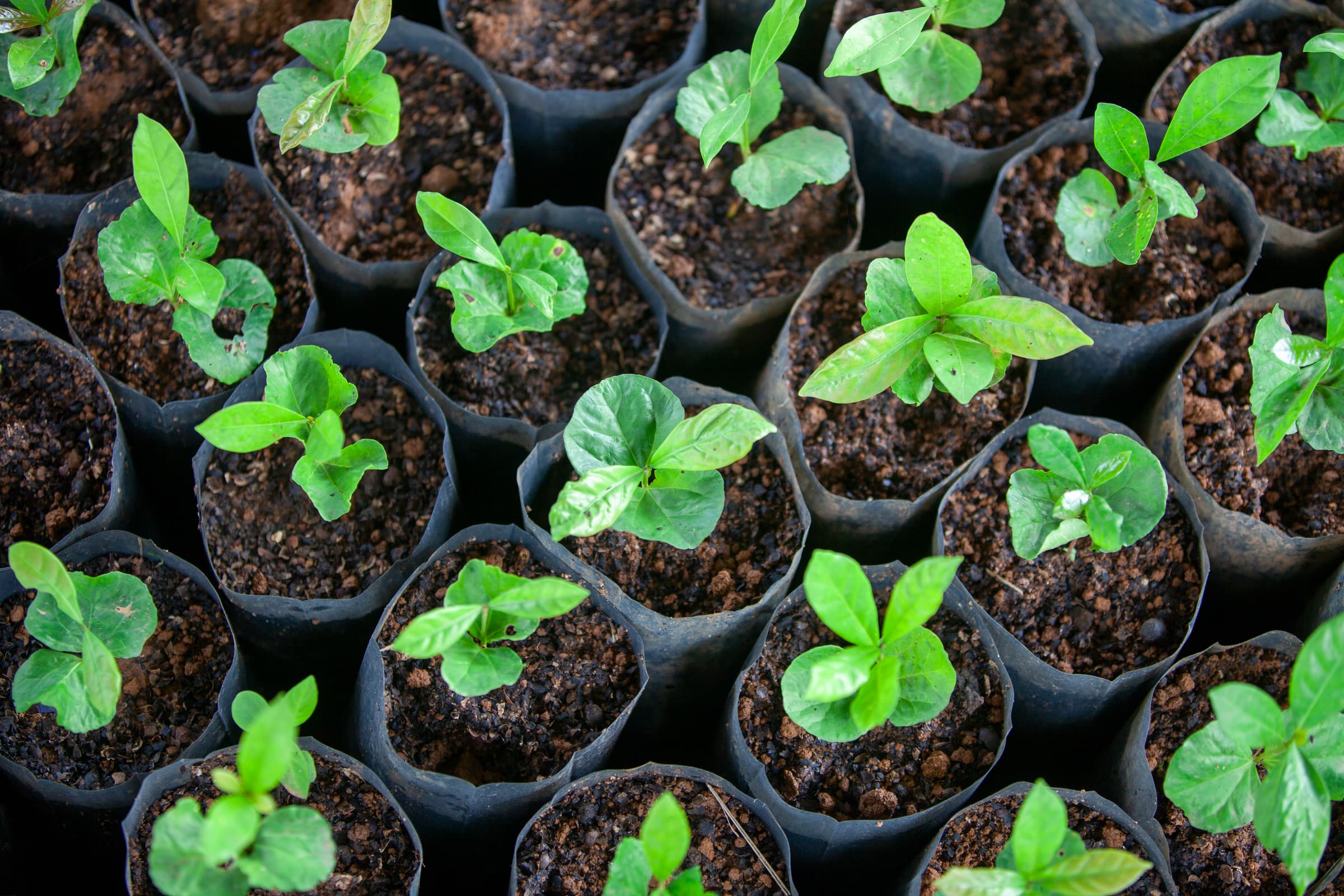
From here, Robusta coffee continues to move around the world, being present in India first with seeds from Java, Indonesia – then imported from West Africa. Selected Robusta coffee plants from Java were brought back to Central Africa from 1910 onwards, and to the Belgian Congo in 1916 at the National Institute of Agricultural Research of the Congo (INEAC), which played an important role in the production of coffee. selective development between 1930 and 1960. In Africa, Robusta coffee production developed in Madagascar, Uganda, Ghana and Ivory Coast, often alternating endemic variants with variants introduced from commercially produced in other parts of the continent. The main driver of Robusta coffee dispersal during this period stemmed from the spread of rust on coffee leaves.
The Robusta coffee plant was then introduced to Latin America – specifically Brazil, and Central America via Guatemala between 1930 and 1935. In addition, the Center for Tropical Agronomy Research and Teaching (CATIE) in Costa Rica introduced the Robusta plant known as the “French lines” from about 1981 – 1983.
Today, the countries located in Asia and Oceania are the largest producers of Robusta coffee, generating 60% of the world production at 41.5 million 60 kg bags per year. Following this region is South America, which produces 28% of the world’s robusta coffee market, generating 19.8 million bags of coffee in the 2020-2021 crop year.
ICO, 2022
Genetic diversity and conservation
C. canephora is a diploid species (2n = 2x = 22) divided into two large genetic groups, Guinean and Congolese. The Guinean group is native to Central West Africa, while the Congolese group is native to Central Africa. Of these two groups, Guineans are the most common. In addition, within each group, there are different populations or subgroups. Within the Guinean group, there are at least two subgroups, named “kouilou” or ”conilon” and “robusta”. However, recent studies using advanced genetic techniques have divided the coffee species C. canephora into 5 genetic groups (A, B, C, D and E).

Geographically, genetic group A includes wild populations from Congo and Cameroon; group B from East-Central Africa; group C from West-Central Africa; Cameroon and northeastern Congo; group E from Congo and southern Cameroon; while group D includes wild populations from Côte d’Ivoire (Ivory Coast) and Guinea. In addition, some wild populations in Uganda clustered into another distinct group (group O ). Finally, in 2019, several authors described the genetic diversity of C. canephora with eight distinct genetic groups, with the addition of a Ugandan group (group O), a group from the South . Democratic Republic of the Congo ( CHEAP Group)) and finally a group from Angola (group G ), while the difference between group E and R is weaker.
Reference source: The article is compiled based on content provided by the World Coffee Research Organization (Word Coffee Research), you can see the original article at: History of Robusta
- https://varieties.worldcoffeeresearch.org/robusta/varieties
-
Lịch sử và đa dạng sinh học của Robusta: https://primecoffea.com/lich-su-va-da-dang-sinh-hoc-cua-robusta
Related topics: robusta coffee, robusta, coffee, navgroup menu, caffè verona, breakfast blend, fair trade, trade certified, blend breakfast, roast caffè, ethical sourcing, medium roast, fine robusta, arabica, starbucks, brands, death, climate, flavor, differences, recipes, specialty, shop, world
bitter, years, vietnamese, coffee beans, arabica beans, robusta beans